I have enjoyed reading The Frankfort Power Brokers, the multi-article introduction by the Herald Leader‘s Austin Horn to 15 unelected power-brokers who “play a major role in shaping Kentucky’s political environment and therefore our state.” In the two decades spent covering my own city, I have developed a similar fascination with identifying its own set of unelected power brokers.
Kentucky is a small and clannish state. Thus, part of my Power Brokers interest lies in the likely overlap of Lexington’s Unelecteds with the greater Commonwealth of Unelecteds who tell their stories to Horn. Names-in-Common. Common jobs. Overlapping Board membership or political patronage. Reading Power Brokers is for me like biting into a juicy birria of ancestry records, soap tv, and live WWE Smackdown.
Take Brad Shattuck. In Part 2, “Kentucky’s Political Operatives: Those who shape campaigns, candidates, and narratives,” Horn describes Shattuck as the Republican founder of Strategic Impact, “one of the most politically important consulting firms in the state” and with regional offices in D.C. and Chicago and Birmingham.
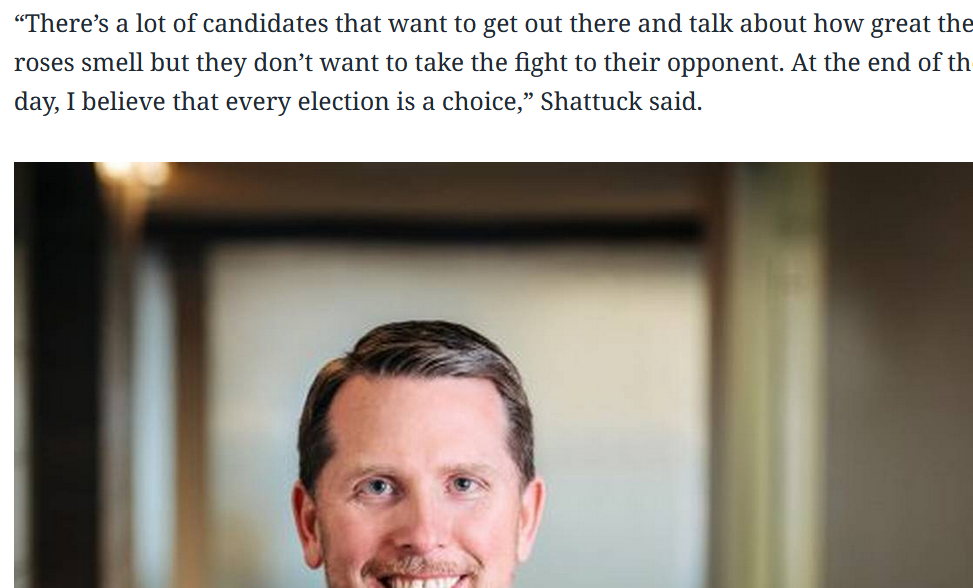
Does Brad Shattuck bear any relation to David Shattuck, author of a series of North of Center articles that advocated for keeping downtown’s 1-way street grid? The mind races.
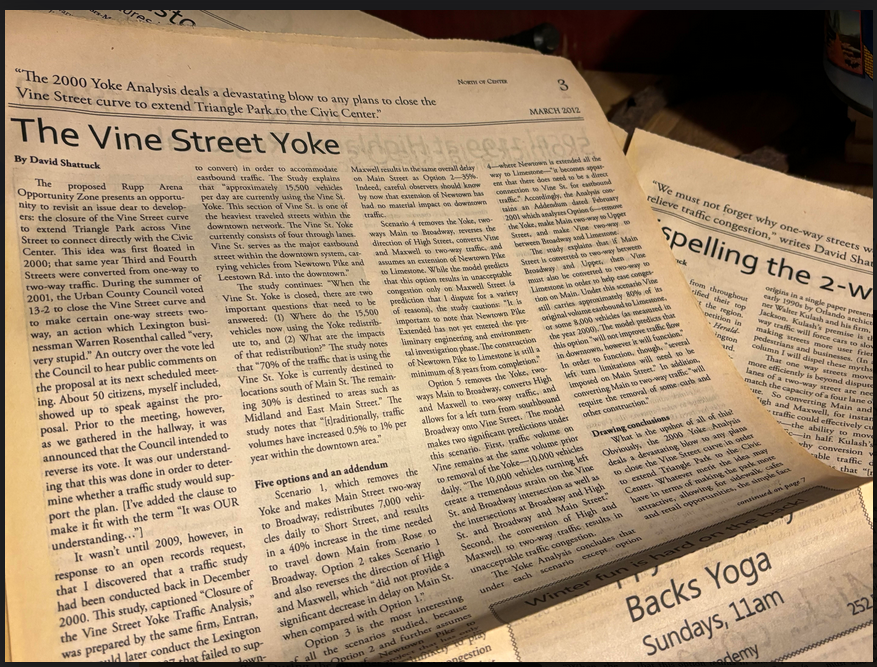
For a time, two-way conversion functioned in Lexington as a partisan issue on the down low, a way for Obama “Smart” Democrats to push their forward-thinking bonafides onto a Great Recession populace in search of change of any sort. Two-way would, in fact, feature heavily in the winning 2010 campaign of Lexington Mayor (and future Andy Beshear appointee to head the Kentucky Transportation Cabinet) Jim Gray against the incumbent, Jim Newberry.
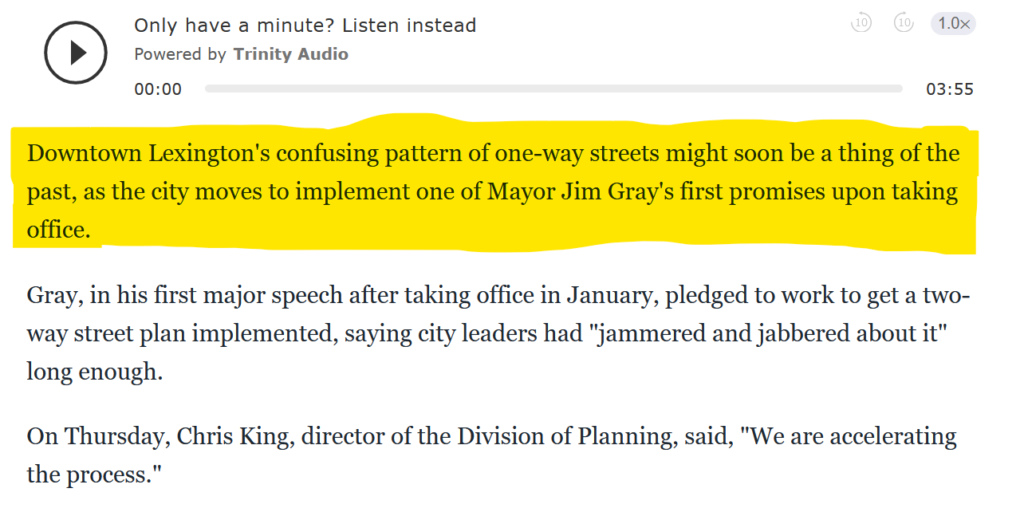
Horne’s Shattuck, Brad Shattuck, runs a Lexington branch among Strategic Impact’s other offices. Meanwhile, NoC‘s Shattuck, David Shattuck, was succinctly described to me by a local writer as a Republican daily commuter to Frankfort, this observation made as convincing criticism of 1-way ideology by my staunchly pro-2-way informant.
Speculative consideration of the Shattuck party legacy is perhaps not of much interest to anyone but me, a story told without much aim. But other Power Broker connections seem of greater import.
This series will look closer at the unelected Louisville-based power broker Christina “Christy” Brown, described in Part 3, “Their dollars drive policy: Two major KY political fundraisers a Louisville Dem & an Eastern KY Republican,” as “one of the most prominent philanthropists in Kentucky.”
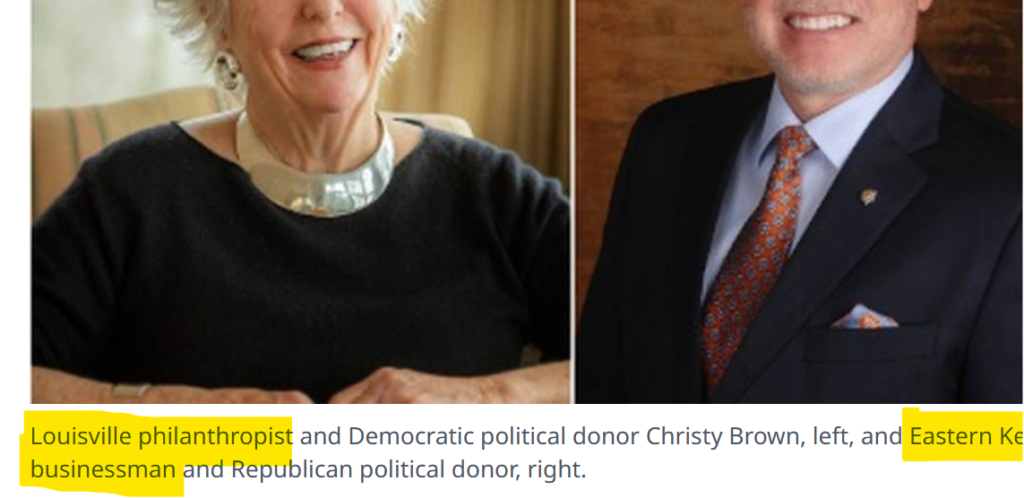
Horn’s larger purpose in Power Brokers is to show “how Frankfort works through the eyes of these people.” Like all writing, the approach has benefits and limitations. Readers get a helpful skeleton of useful information about “Christy” Brown, her job, her philanthropy, her beliefs and her political support.
On the downside, though, the series perspective–elite power brokers tell us in their own words how they justify their specialized access!!–seems oddly out of whack. This is particularly true for Horn’s focus on Brown. I have been struggling with how to describe this feeling, personally. The best I’ve been able to come up with is it’s akin to taking a house tour in the 1950s of Thomas Jefferson’s Monticello or Henry Clay’s Ashland. Horn’s Brown can be mind-bendingly faithful to the “Christy” Brown line.
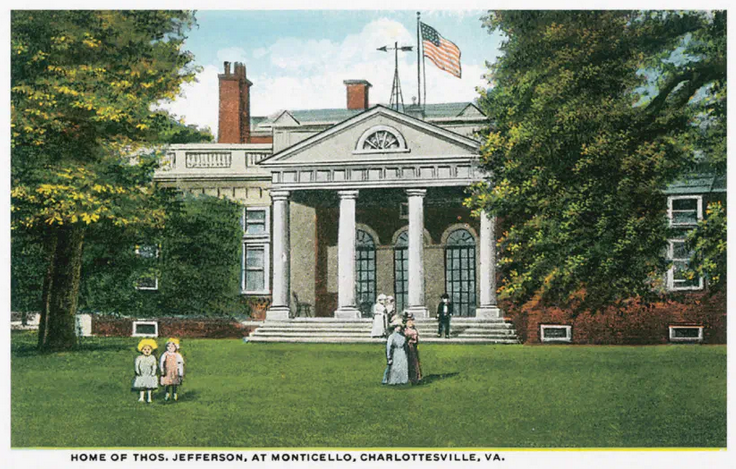
For the uninitiated, this line is: engaged Maryland philanthropist marries into the Louisvile-based Brown Forman spirits family and dives into the work of improving the Commonwealth, with an eventual niche focus on “health.”

Expressions within the Brown line may vary somewhat, like these lines from Nantucket.
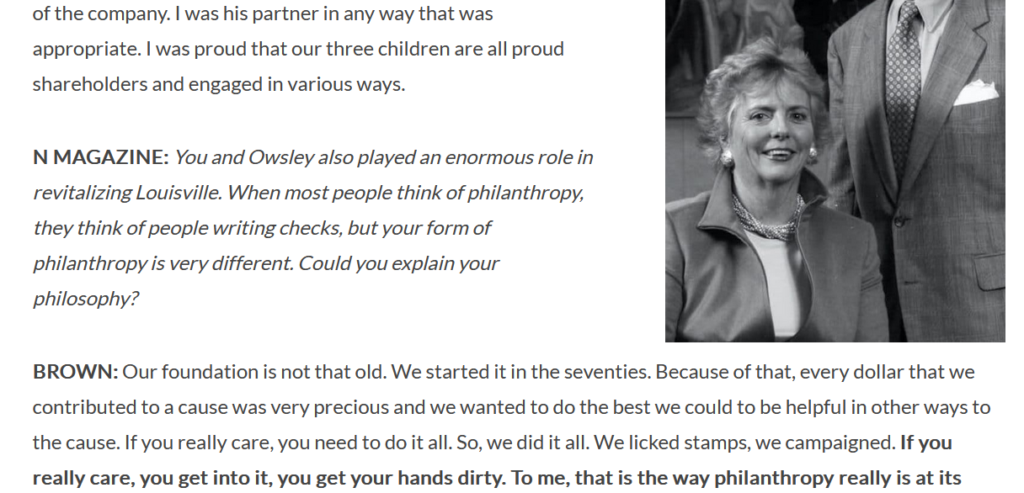
Sometimes the context changes. Here is one from the smart people at Brunswick Group.

But they are all of a piece. Horn’s Brown will recount for readers the philanthropist “Christy” Brown’s fifty-year history of non-profit start-ups, which include inter-faith groups and Christian Appalachian projects, historic preservation campaigns, and a university research institutue. It will devote a graph to the most current Brown non-profit, A New Vision of Health, a sort of umbrella organization that emphasizes “health” in all its various forms and contexts.

“We need to be empowering more and more people to care about working for the health of our communities, in all its forms,” Horn’s Brown will quote “Christy” Brown as saying. “People call that democracy.”
Mayer’s Brown
Now, I like Horn’s Brown. And I like most all Horn’s Brown cousins. If offered, I’d go so far as to travel to any establishment in NuLu or Whiskey Row and consume a local-grown hamburger and a West Sixth IPA with any among that line. This series, though, the deca-billionaires in your community, will instead explore an alternate system of descent. This line will be more like the recently developed Traces Tour at Ashland.
My Brown, let’s call it Mayer’s Brown, begins at line 3. From Horn’s Brown:
In 2020, Forbes ranked the Brown family as the 13th wealthiest in the nation.
Horn’s Brown, Line #3
Here is that line visually.
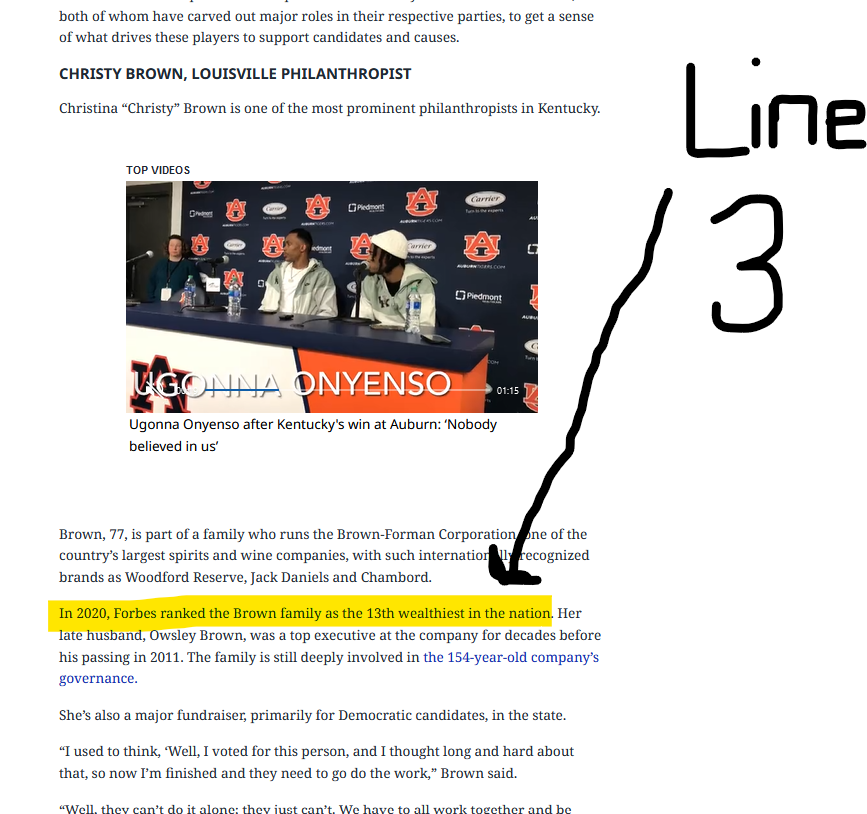
Line 3 places the Kentucky Power Broker and her Brown gang at the upper-end of a truly vintage club of American “deca-billionaires.” This genetic pool owes to the family’s stakes in the 150 year old Brown Forman spirits company, historically based in Louisville, Kentucky. As power is concerned, this Mayer’s Brown DNA precedes any subsequent expressive Brown phenotypes like philanthropist, art collector, hotel-developer, preservationist, activist, golf buddy, patron, or the like.

But how to classify this Brown, if not as the state’s largest philanthropist?
Before the rise of capitalism, in say the 1200s, we may have termed the Brown occupation as “feudal lording” or something similar. Not kings, quite, nor yet colonels, but hereditary owners of a vast supply of assets, resources and land into which others must pay tribute. Dukes. Barons. Earls. Viscounts.
In today’s modern world, we generally classify deca-billionaires as oligarchs. These are consumers of riches wholly disconnected from any requirement for personal labor, and mostly overseen by a private army of support labor so immense that it can seemingly supersede any need for civil services.
Globally, our feelings about oligarchs range from disinterested mild dislike to rabid antagonism. Ukranian and Russian oligarchs. Saudi and Chinese oligarchs. Greek and British and Israeli oligarchs. We don’t like ’em, in part because these people who lead shrouded and mysterious lives seem so…feudal.
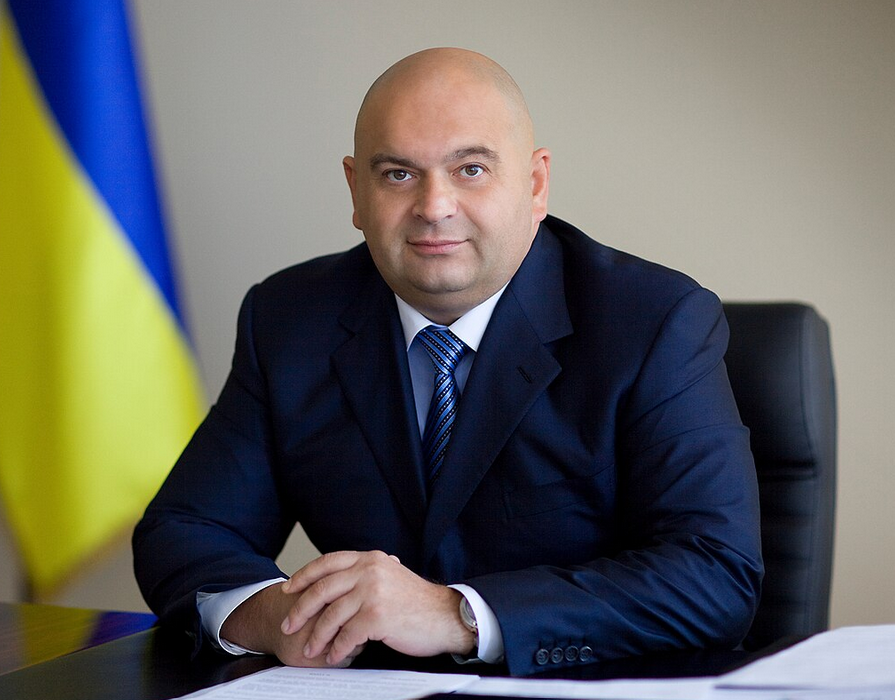
In the U.S., feelings soften somewhat. Rockefellers. Vanderbilts. The JB Pritzkers. The Sackler and Mars Families. The Waltons, the Gates. You may like some. Not others. Probably depends on their publicist, or your location of residence.
The deca-billionaires in your community will look at one such American oligarch family, the Browns of Louisville. Across three future articles, it will ask how the family operates within its regional sphere of influence, which for lack of a better word I’ll refer to as its contrada. How is our plebian allegiance to the contrada established?

As it turns out, the reach of the Brown contrada extends into my own mid-city of Lexington, often overlapping directly with the local set of power brokers I know well.
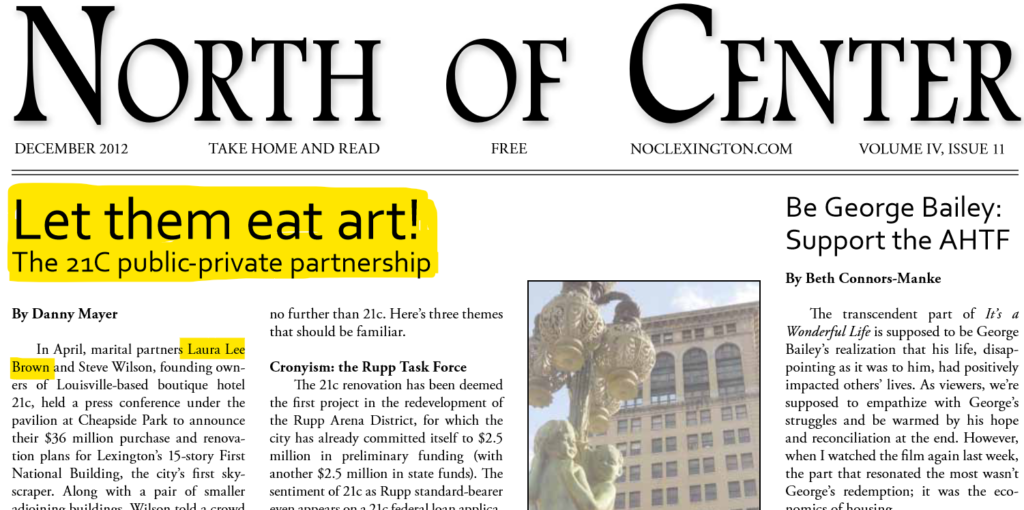
This is to say that I hold, it would seem, some standing to comment as an enrolled subject of the “Christy” Brown idea of a healthy democracy. For fifteen years I have been examining in fine detail the work record of her chosen healthy candidates, and I have made note how the Brown goop of corporate-government-nonprofit health has propagated, like a colony of healthy friggin’ rabbits, across the Brown’s bluegrass contrada.
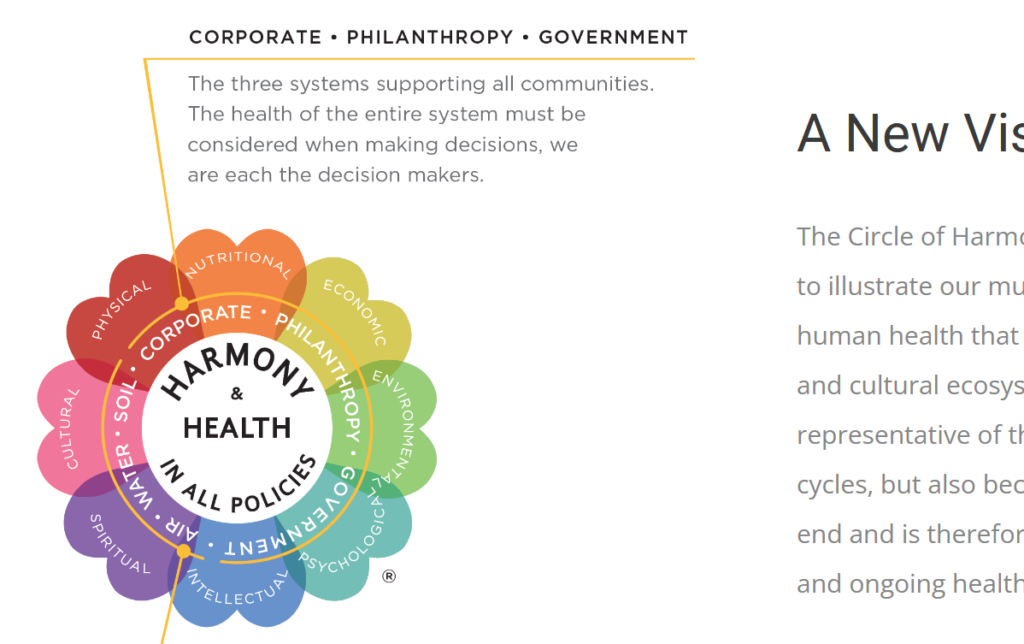
Fealty to this Brown goop has undoubtedly benefited the Brown family. Like a good lime mortar, it has cemented the Brown interests to the interests of the greater Commonwealth. But what has it done for the rest of us plebs in this poor, unequal and unhealthy state?
In Part 2, author will examine one of the three supporting systems of all healthy communities as a strategy of decision-making.


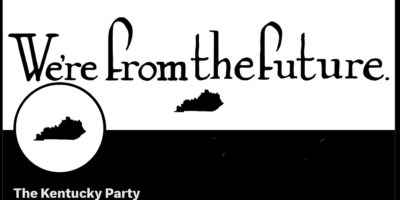
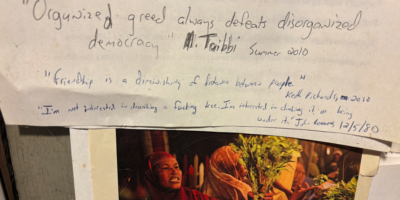

1 Pingback